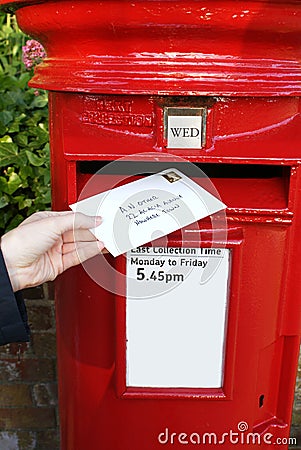div.slide'>
Z = Zoos
London Zoo has a pillar box painted in zebra stripes for visitors to use to make donations. Chessington Zoo has one in tiger stripes. Many former Post Office/Royal Mail letter boxes have found their way into private hands, or are now preserved in museums, or displayed by other organisations. If they were once official postal boxes the LBSG records them all. The LBSG Directory, available to Members, records every genuine box, in use, in private hands, or abroad.
2016-02-10T16:23:27+00:00
London Zoo has a pillar box painted in zebra stripes for visitors to use to make donations. Chessington Zoo has one in tiger stripes. Many former Post Office/Royal Mail letter boxes have found their way into private hands, or are now preserved in museums, or displayed by other organisations. If they were once official postal boxes the LBSG records them all. The LBSG Directory, available to Members, records every genuine box, in use, in private hands, or abroad.
Letter Boxes For Sale
B = Bantam
The name was chosen after a competition among Royal Mail employees, to be applied to a small cast-iron box designed by Kenneth Grange and installed mainly in rural locations. The box bears a supposed resemblance to the fuel tank of a GPO Bantam motorcycle as well as being small. They were introduced in 1999; Scots, Welsh and English versions exist.
Decorative Letter Boxes
2016-02-10T15:57:36+00:00
The name was chosen after a competition among Royal Mail employees, to be applied to a small cast-iron box designed by Kenneth Grange and installed mainly in rural locations. The box bears a supposed resemblance to the fuel tank of a GPO Bantam motorcycle as well as being small. They were introduced in 1999; Scots, Welsh and English versions exist.
C = Carron Company
One of the major suppliers of letter boxes during the twentieth century. From the Mungal Foundry, near Falkirk, Stirlingshire they cast pillar boxes (from 1922), wall boxes (from 1952) and lamp boxes (from 1969 to 1982). The ironworks were first established in 1759 and played an important part in the Industrial Revolution as well as becoming famous for its naval cannons: the company became insolvent in 1982 after 223 years casting iron.
2016-02-10T15:58:06+00:00
One of the major suppliers of letter boxes during the twentieth century. From the Mungal Foundry, near Falkirk, Stirlingshire they cast pillar boxes (from 1922), wall boxes (from 1952) and lamp boxes (from 1969 to 1982). The ironworks were first established in 1759 and played an important part in the Industrial Revolution as well as becoming famous for its naval cannons: the company became insolvent in 1982 after 223 years casting iron.
D = Dual aperture
Dual aperture boxes first appeared in 1899. Large oval boxes designated as Type C, they provided apertures into separate halves of the box. Originally introduced in London to help pre-sort mail into 'LONDON and ABROAD' and 'COUNTRY' destinations. In the 1960s Type C boxes replaced all the single aperture boxes in central London, sweeping away many early and historic boxes.
2016-02-10T16:05:14+00:00
Dual aperture boxes first appeared in 1899. Large oval boxes designated as Type C, they provided apertures into separate halves of the box. Originally introduced in London to help pre-sort mail into 'LONDON and ABROAD' and 'COUNTRY' destinations. In the 1960s Type C boxes replaced all the single aperture boxes in central London, sweeping away many early and historic boxes.
E = Escutcheon
Escutcheons are found widely on many types of pillar box and wall box, they were intended to provide protection for the key hole. The collecting postman could turn a disc with two prongs located on the head of the key which would slide a cover over the keyhole, excluding rain and dirt. In practice they were rarely used and frequently got clogged-up when the box was painted.
Letter Box Post Boxes Sizes
2016-02-10T16:05:39+00:00
Escutcheons are found widely on many types of pillar box and wall box, they were intended to provide protection for the key hole. The collecting postman could turn a disc with two prongs located on the head of the key which would slide a cover over the keyhole, excluding rain and dirt. In practice they were rarely used and frequently got clogged-up when the box was painted.
Letter Boxes For Treats
0



